
The simplest, most uncomplicated addition to your workflow.
REINTRODUCING THE M135
35mm Film & Slide Carrier.
The “M” stands for Micro, because our most basic Film Carrier is diminutive in size—and small on the tall talk.
It just works.
Phantom Film Supply’s M135 offers uncompromising ease-of-use to streamline your workflow, without sacrificing tack-sharp scans.
Now Injection-Molded.
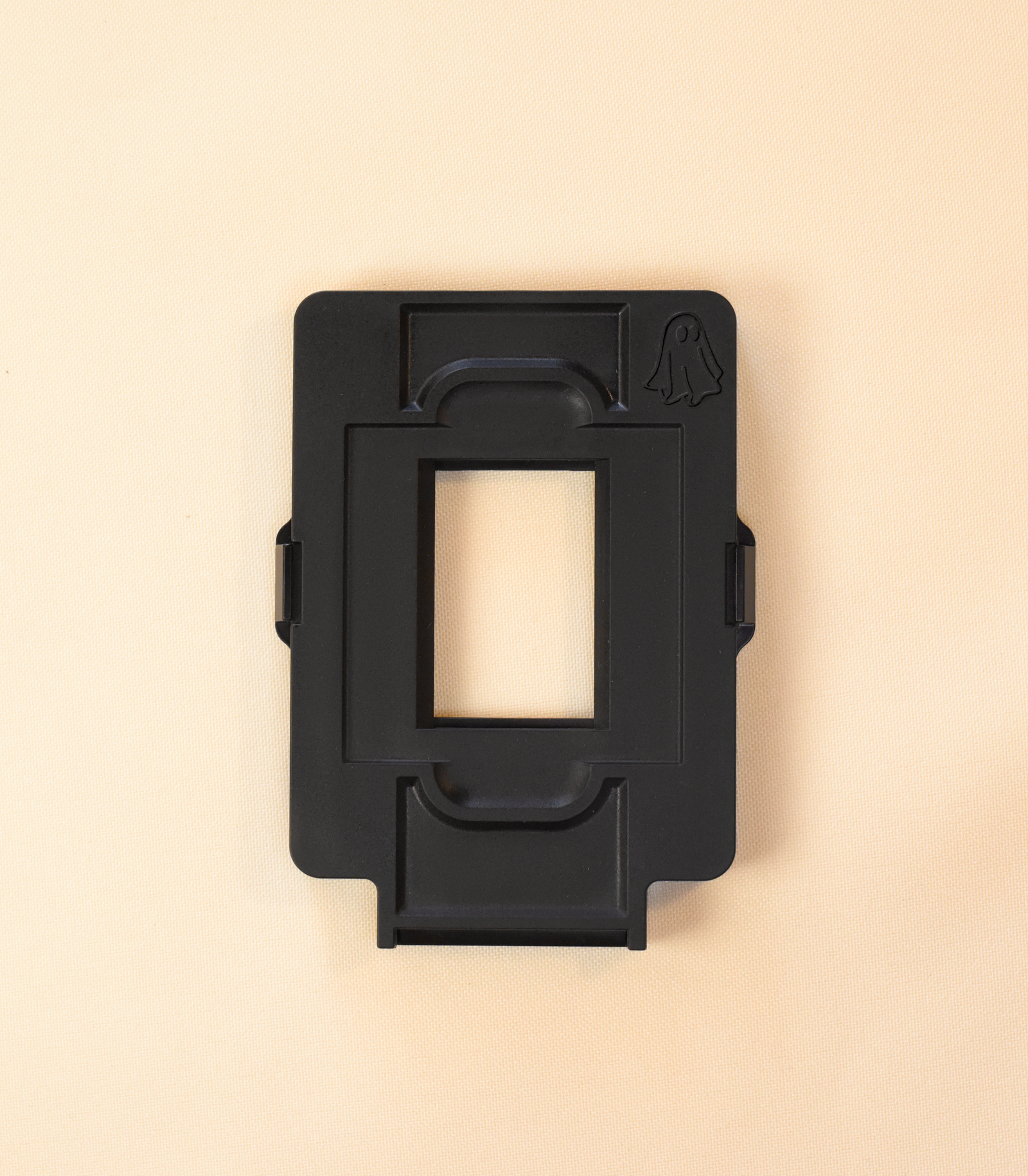
Key Features
The M135 film holder accommodates 35mm film and standard 2×2″ slides. (Works with both cut and uncut film!)
Keeps film flat and centered for ultra-sharp scans.
Low-friction ABS construction and pull-through design allow for smooth and efficient operation.
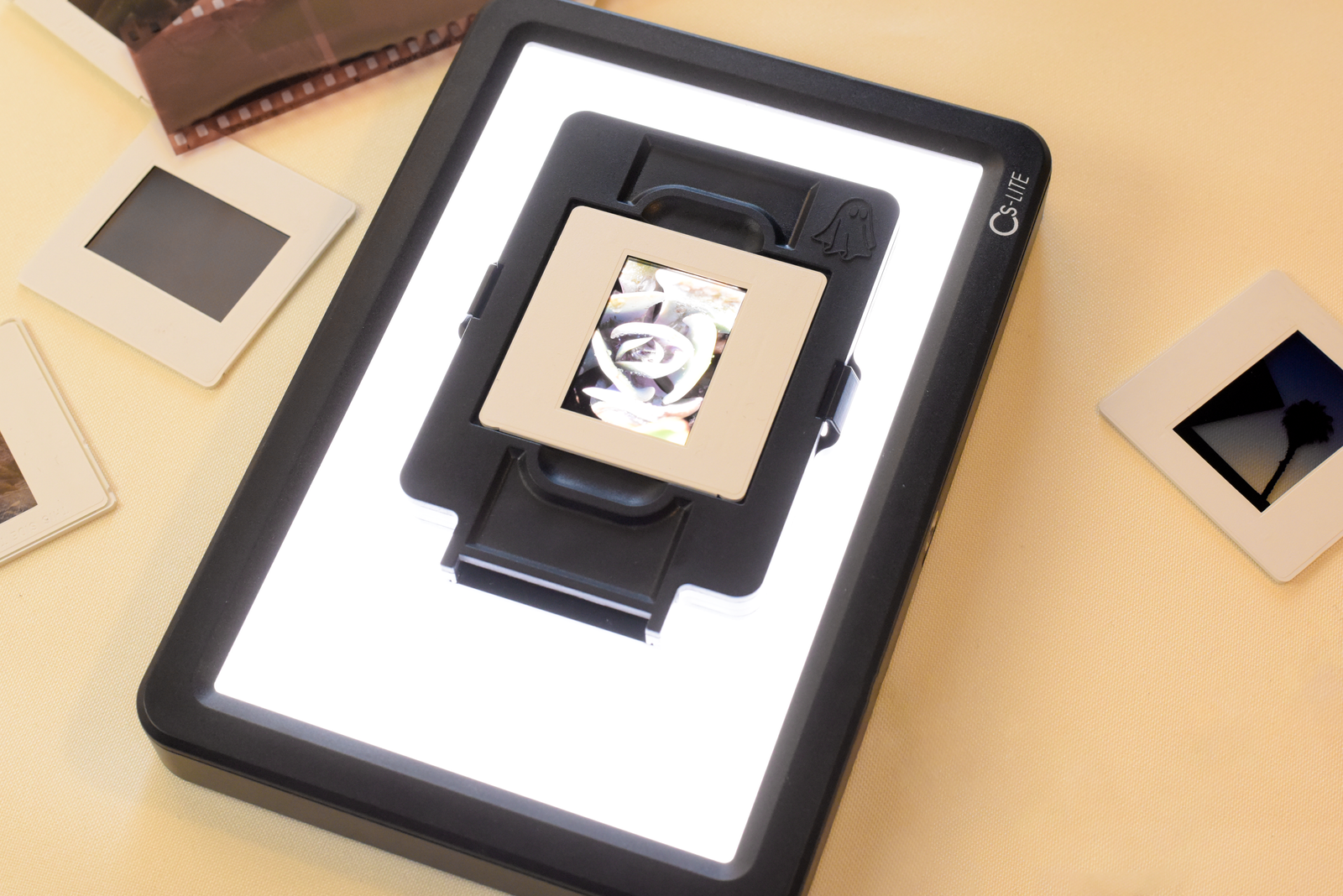

Chamfered Aperture
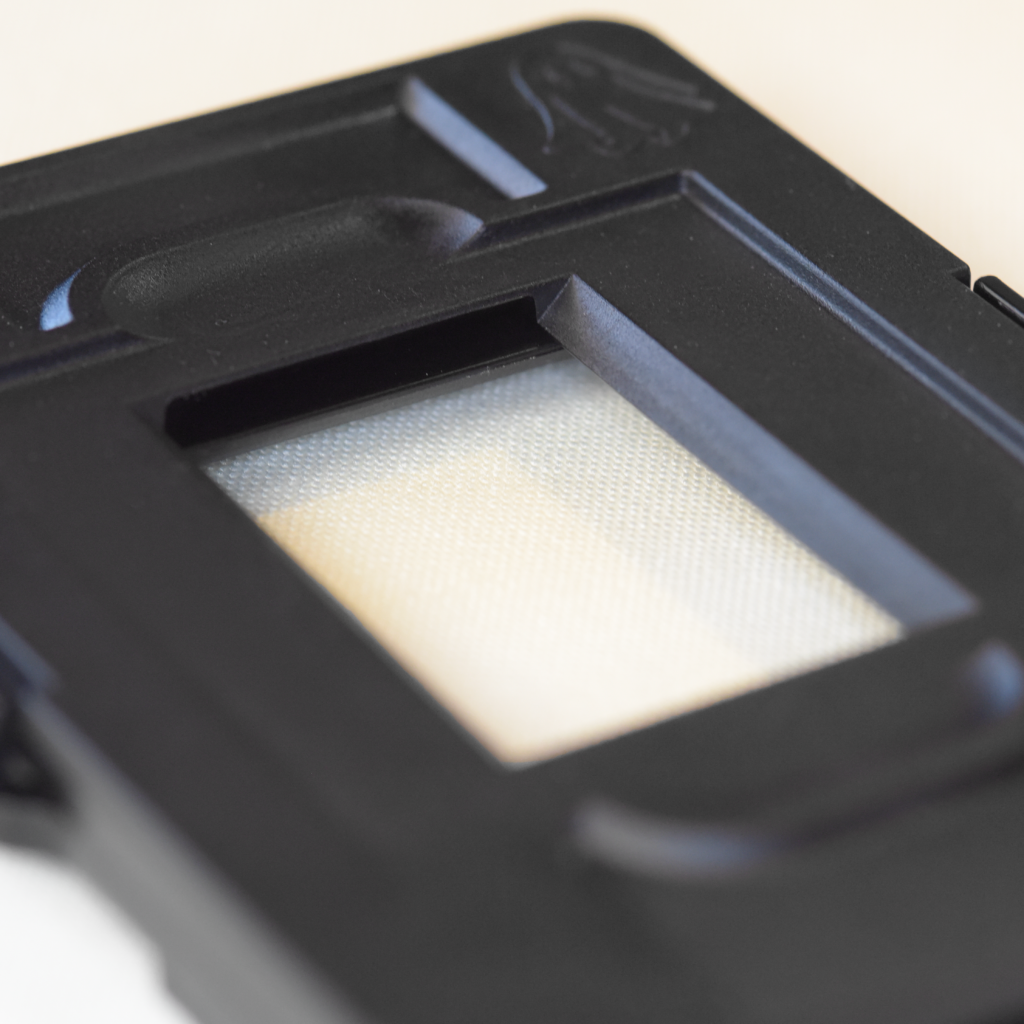
Targets unwanted reflections and glare so that the carrier won’t reflect light back onto your negatives.
Keyhole Guiderails
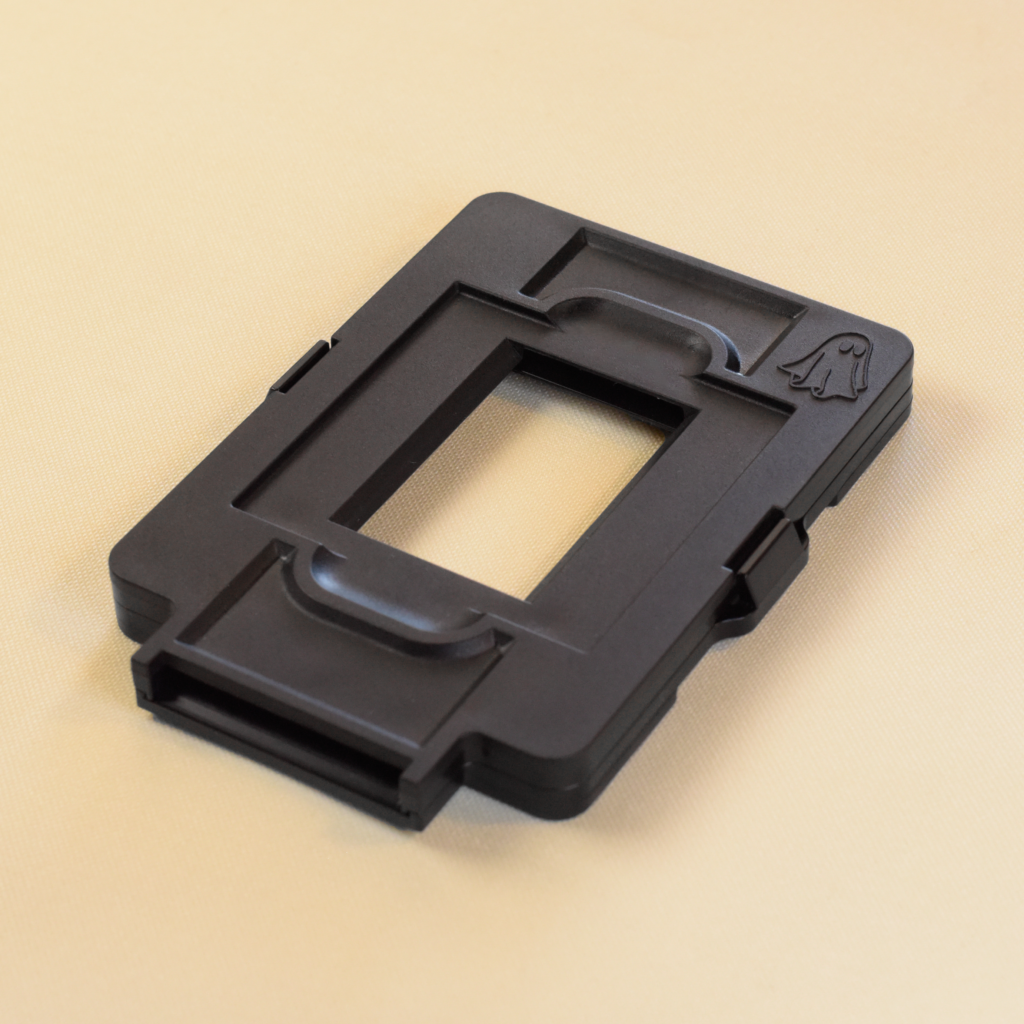
The M135’s guiderails keep film centered and eliminate the risk of film catching on or slipping between the mating surfaces of the carrier.
Integrated Slide Holder

No need to switch out masks or fiddle around with adapters while scanning. The M135 has a built-in holder for keeping slides centered and in place.
Endorsed, by You.
Est. 2023
The injection-molded iteration of the M135 is the same original design—only refined—continuing its proven real-world performance and upholding its promise of simplicity, quality, and value.
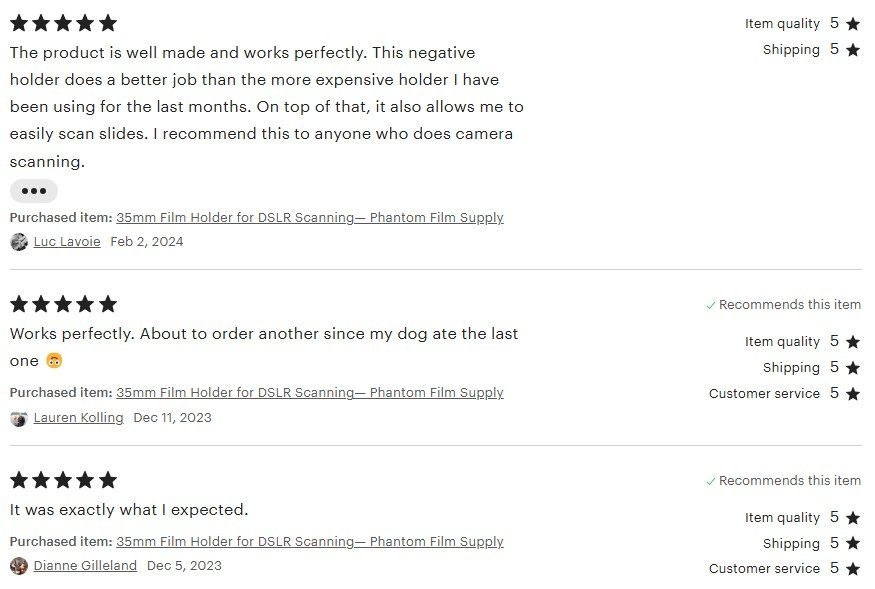
Why DSLR Scan?
Flatbed scanners, on the other hand, use CIS sensors that are compact and efficient, but not superstars when it comes down to preserving details and tones. For example, take the Epson V600. And, of course:
Flatbeds. Take. Forever.
In short: CMOS image sensors have leaped forward lightyears since 2008.
And capturing scans in RAW allows us to preserve—and manipulate—details and tones that are often lost to traditional Lab or Flatbed scans. Newer software, such as Negative Lab Pro, even puts the inversion process back in your hands.
